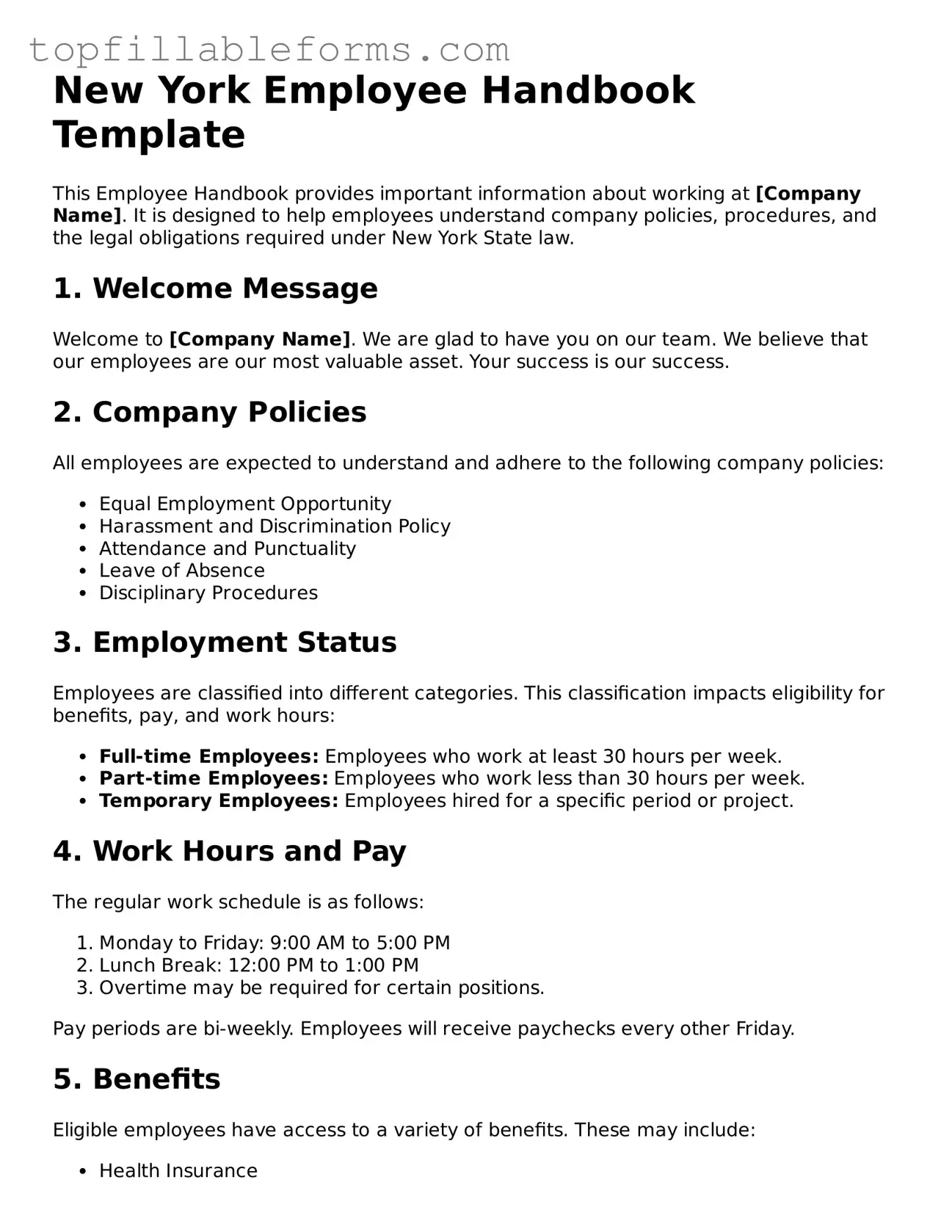New York Employee Handbook Template
This Employee Handbook provides important information about working at [Company Name]. It is designed to help employees understand company policies, procedures, and the legal obligations required under New York State law.
1. Welcome Message
Welcome to [Company Name]. We are glad to have you on our team. We believe that our employees are our most valuable asset. Your success is our success.
2. Company Policies
All employees are expected to understand and adhere to the following company policies:
- Equal Employment Opportunity
- Harassment and Discrimination Policy
- Attendance and Punctuality
- Leave of Absence
- Disciplinary Procedures
3. Employment Status
Employees are classified into different categories. This classification impacts eligibility for benefits, pay, and work hours:
- Full-time Employees: Employees who work at least 30 hours per week.
- Part-time Employees: Employees who work less than 30 hours per week.
- Temporary Employees: Employees hired for a specific period or project.
4. Work Hours and Pay
The regular work schedule is as follows:
- Monday to Friday: 9:00 AM to 5:00 PM
- Lunch Break: 12:00 PM to 1:00 PM
- Overtime may be required for certain positions.
Pay periods are bi-weekly. Employees will receive paychecks every other Friday.
5. Benefits
Eligible employees have access to a variety of benefits. These may include:
- Health Insurance
- Retirement Plans
- Paid Time Off (PTO)
- Employee Assistance Programs (EAP)
6. Safety and Health
Employee safety is a priority at [Company Name]. All employees must adhere to safety guidelines and report any unsafe conditions to their supervisor immediately.
7. Acknowledgment of Receipt
By signing below, you acknowledge that you have received and understand the Employee Handbook. You agree to comply with the policies and procedures outlined in this document.
Employee Name: _______________________
Date: _______________________
